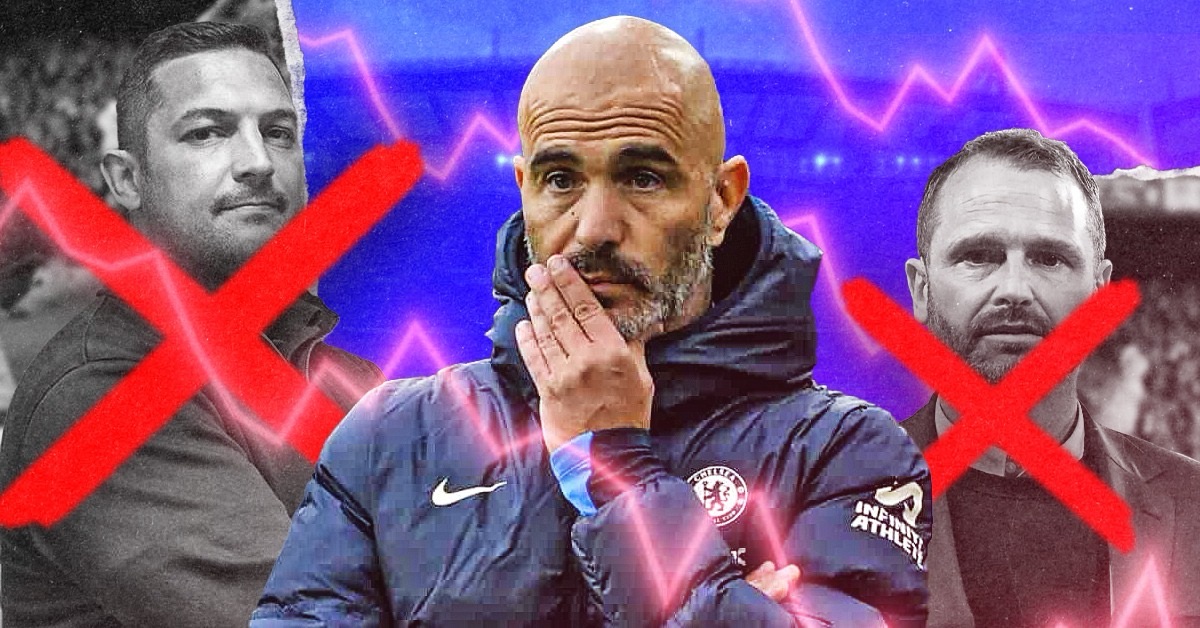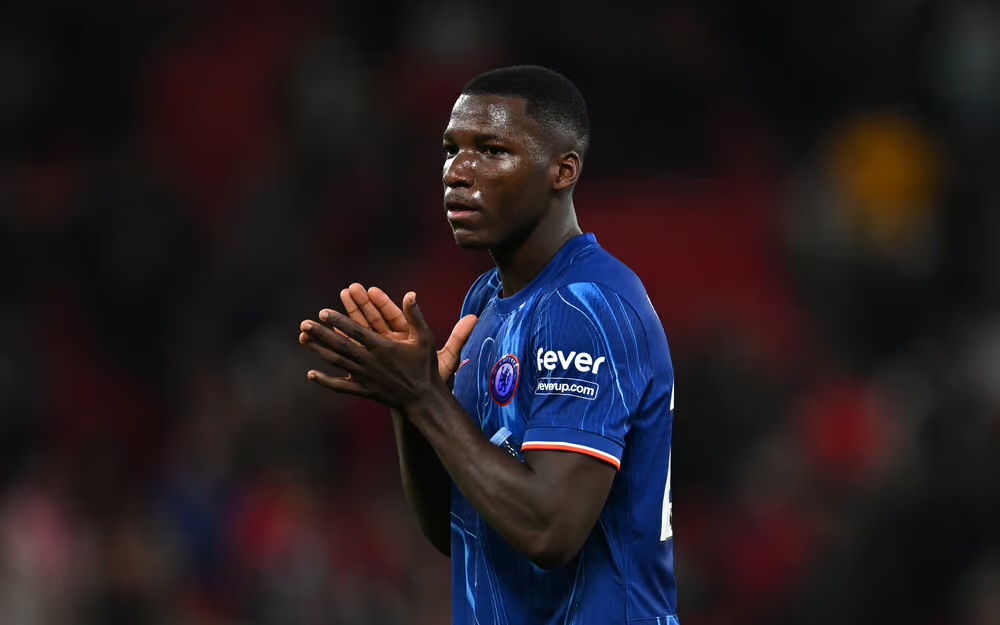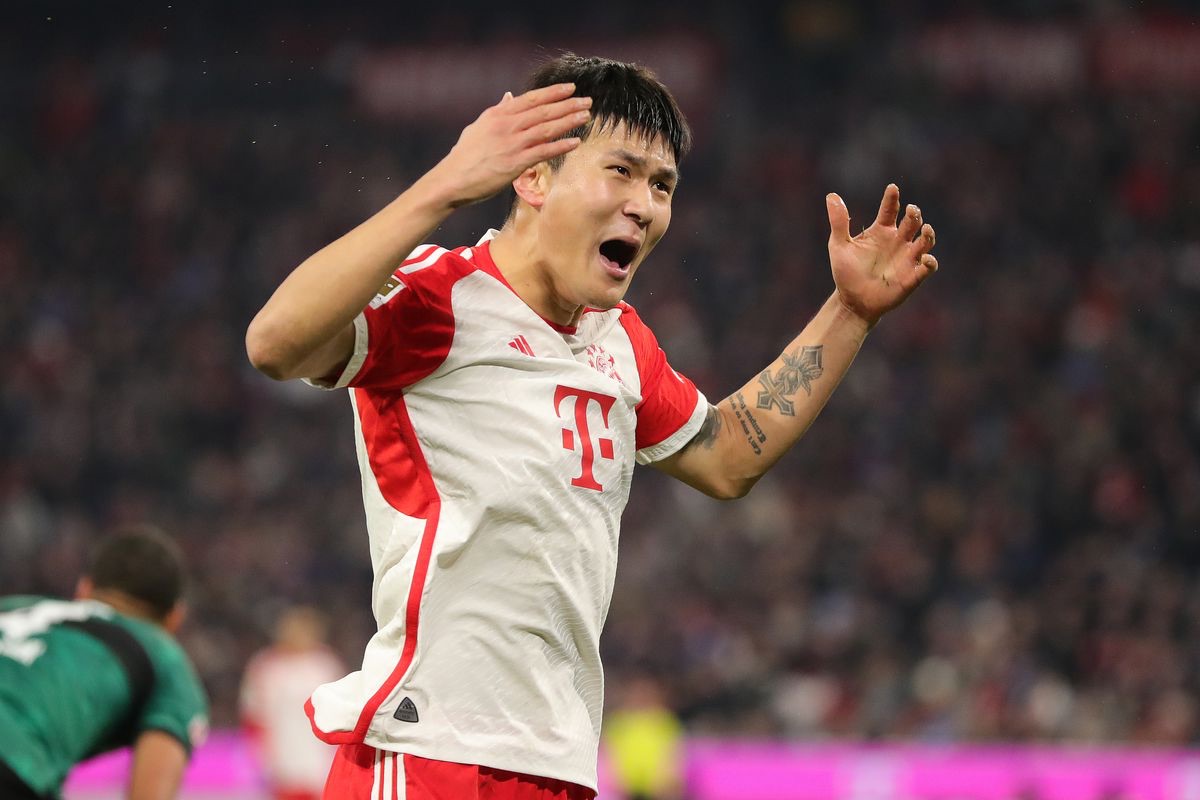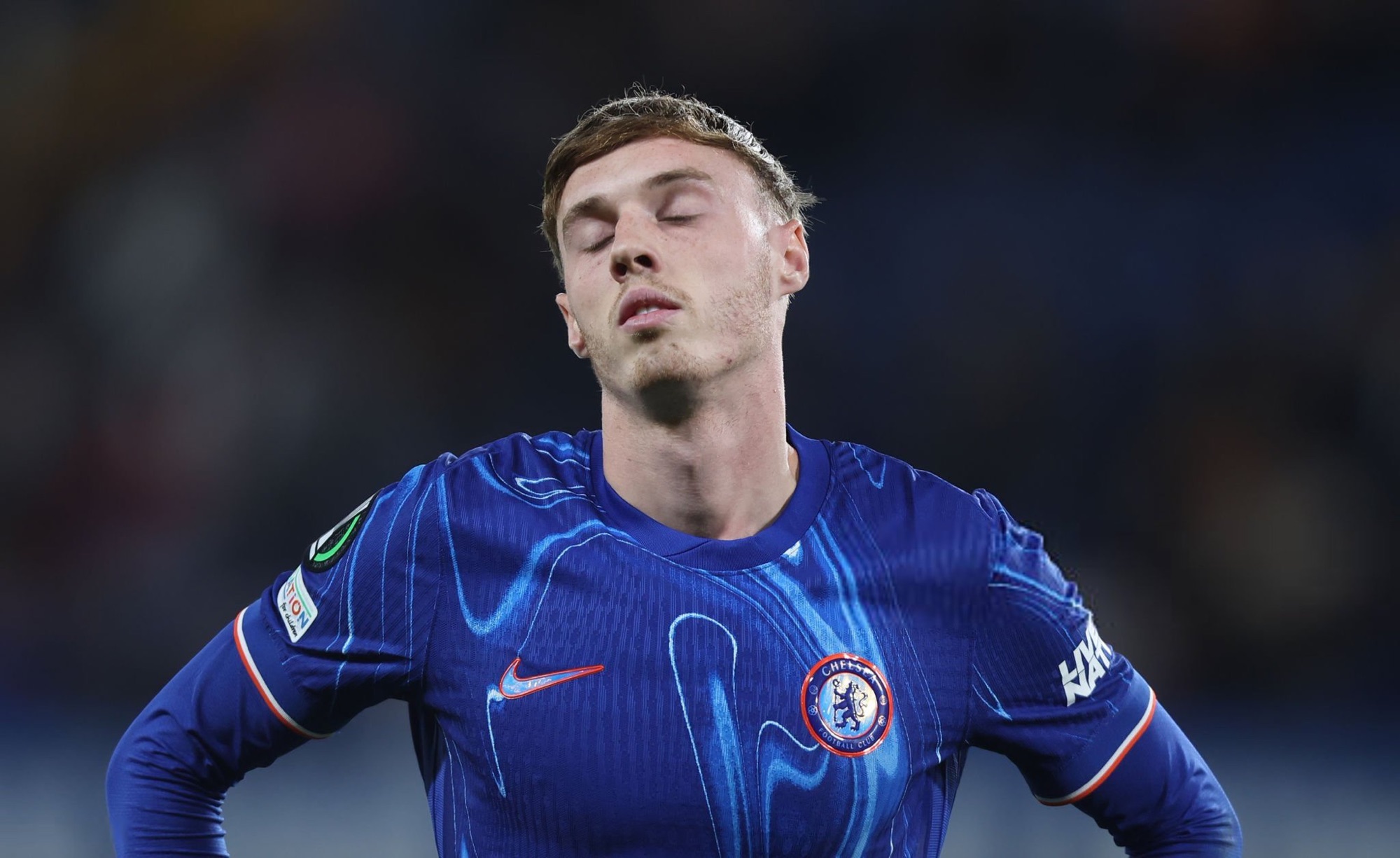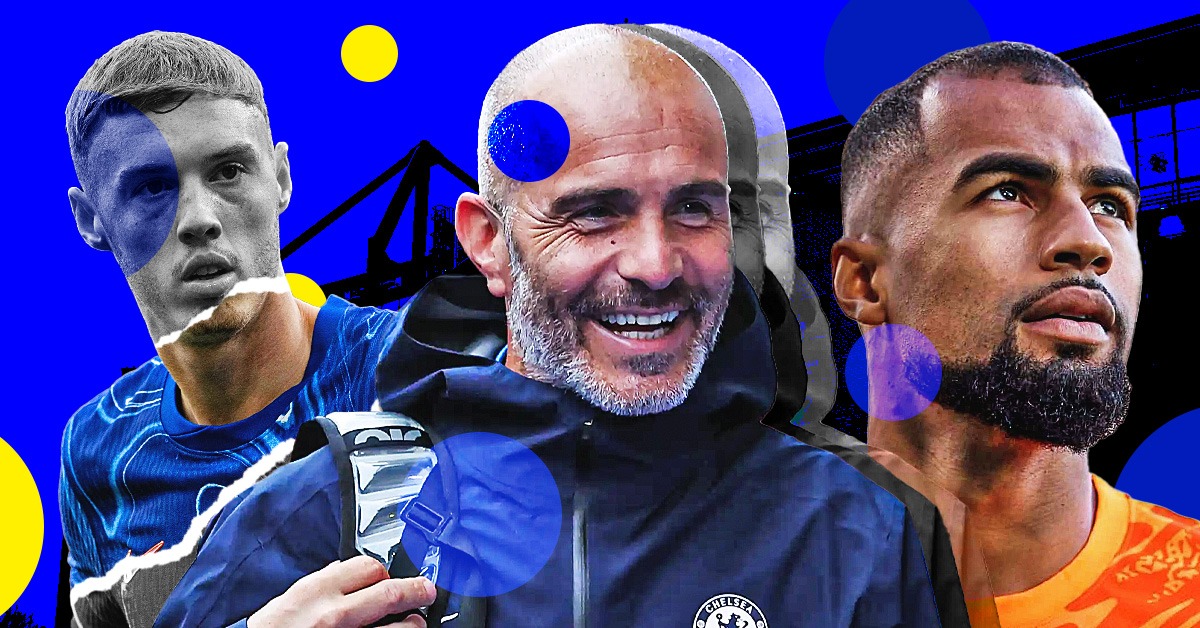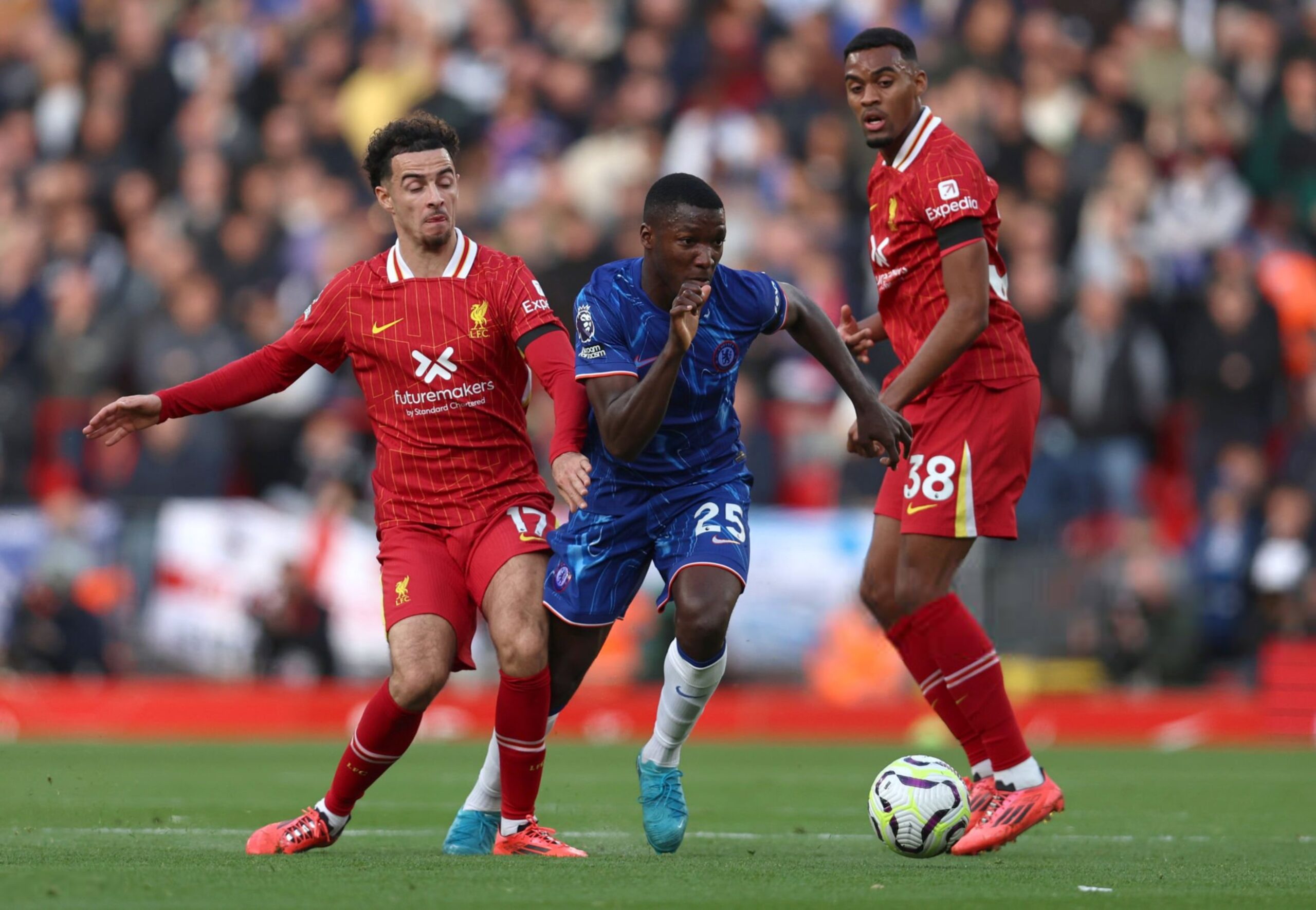 With the speculation increasing for the January transfer market window about a possible move to Chelsea for Everton’s main asset this season, I decided to have a look at Marouane Fellaini’s possible contribution to the current Chelsea team. The Blues arguably need more options in central midfield since the departures of Michael Essien and Raul Meireles. The big Belgian would probably offer something few clubs could boast about in terms of variety but there’s other fair reasons to think he wouldn’t be what Chelsea needs to first and foremost to ‘save his season’.
With the speculation increasing for the January transfer market window about a possible move to Chelsea for Everton’s main asset this season, I decided to have a look at Marouane Fellaini’s possible contribution to the current Chelsea team. The Blues arguably need more options in central midfield since the departures of Michael Essien and Raul Meireles. The big Belgian would probably offer something few clubs could boast about in terms of variety but there’s other fair reasons to think he wouldn’t be what Chelsea needs to first and foremost to ‘save his season’.
YES
He’s a target man and offers variety
Everton has finally managed to match his potential on the paper right from the start of the season. The Toffees sit 6th on the table after 17 games and hound Chelsea from just two points. David Moyes’ recipe is quite simple in terms of playing approach. He managed to implement a whole team around one central player, the 6ft4in Belgian Marouane Fellaini, recently elected Barclays Player of the Month for November. 
Fellaini uses to be played in front of two other midfielders (Darron Gibson, Phil Neville, Leon Osman) on a weekly basis whereas it was rather a punctual use from Moyes in the past, depending on the opposition and the options available (through injuries, suspensions…). Everton’s pattern is characteristic and features a pleasant alternation of on ground (52.2% possession, 9th rate) and direct play (66 long balls per game in average, 4th in the table) based on Fellaini’s ability to act as the target man for Jagielka, Distin or Gibson and Osman’s long balls. Nikica Jelavic tries to float in Everton’s number 25’s shadow but his contribution to the overral play is quite restricted left aside the second balls and the one touch finish opportunities in the box.
But the mighty Belgian also holds a crucial role to provide support to Leighton Baines (or Séamus Coleman) who can get on the overlap and combine on the left channel, as has been highlighted by previous statistical focus. At Chelsea, the expected defensive woes at the back (resulting from an insufficient defensive work from Mata, Hazard down the flanks) has still only been the half of the unappetizing cake of the full backs left alone. With no options to combine and get on the overlap, Ashley Cole and Branislav Ivanovic have been too often useless (and caught high up). Still Mata’s opener against Monterrey in the Club World Cup semi-final is one another example of what can be Ashley Cole’s attacking impact when he’s provided options to link up in the last third.
Since Didier Drogba’s departure last summer, Chelsea arguably lack an option forward to relieve defenders from pressure. John Obi Mikel is the easy way for his team mates who rely on his reliability related to his oustanding ball retention skills and composed passing but the Nigerian’s positioning at the heart of the play hardly allows him enough space to dictate the play ; often forced to provide a safe distribution to the few options available around him.
Fernando Torres’ slight improvement in terms of winning aerial challenges is clearly not enough ; considering he’s never been particulary highly regarded for his hold-up play. Branislav Ivanovic getting higher up on goalkicks is the only option available for Petr Cech when he has no other choice than to hoof the ball.
Marouane Fellaini would then provide variety to the Chelsea team who could punctually break the build up of his attacks via a vertical, direct long ball. Ryan Bertrand’s (or Theo Walcott) ability to follow second balls and run through space would then be used on a more regular basis, considering he’s virtually the only player to make this kind of run in the current Chelsea squad (left aside Fernando Torres).
Nobody can track his mazy runs, he creates space
 Much has been said of Marouane Fellaini’s chest trap with the Belgian probably playing in a league of his own for that uncommon technical asset (at least, used on a such regular basis). When the Belgian is in possession or about to get the ball, his outsize frame naturally attracts opposition players around him, to close the space around him to restrict his movements or to carefully monitor the second balls (from aerial challenges who barely ends up at Fellaini’s expense). Chelsea fans can remember José Mourinho’s tactical move with his Inter squad in 2010 at Giuzeppe Meazza consisting in a double marking on Didier Drogba leaving more space to the proportionally disappointing Salomon Kalou (the more he’s been given space). Such an approach wouldn’t have the same effects anymore considering the individual abilities of the likes of Juan Mata, Eden Hazard and obviously Fernando Torres whose time at Chelsea has been marred by lack of space (due to more players upper to the ball with him on attacking sequences) among other things.
Much has been said of Marouane Fellaini’s chest trap with the Belgian probably playing in a league of his own for that uncommon technical asset (at least, used on a such regular basis). When the Belgian is in possession or about to get the ball, his outsize frame naturally attracts opposition players around him, to close the space around him to restrict his movements or to carefully monitor the second balls (from aerial challenges who barely ends up at Fellaini’s expense). Chelsea fans can remember José Mourinho’s tactical move with his Inter squad in 2010 at Giuzeppe Meazza consisting in a double marking on Didier Drogba leaving more space to the proportionally disappointing Salomon Kalou (the more he’s been given space). Such an approach wouldn’t have the same effects anymore considering the individual abilities of the likes of Juan Mata, Eden Hazard and obviously Fernando Torres whose time at Chelsea has been marred by lack of space (due to more players upper to the ball with him on attacking sequences) among other things.
Marouane Fellaini’s stamina allows him to push forward and end up at the end of Leighton Baines’ crosses with late runs into the box. This has been a key aspect of the Chelsea approach the recent years with as figurehead, Frank Lampard’s long range shots after runs from behind. With the proviso that Chelsea could manage to find the right ‘balance’ – key word in Rafael Benitez’s interviews, that I was also preaching about on a personal plan – such runs could still be used as a regular asset despite Frank Lampard’s inevitable decline.
Rafael Benitez seems to have found a good fomula asking his lines of players to be closer to each others, proving easier attacking transitions, especially in possession sequences where Oscar’s tactical awareness can make Chelsea’s shape switching from 4-2-3-1 to 4-3-3. Thus, a run from behind from an unmarked midfielder can be easily compensated if the player ‘in the hole’ can fill that gap.
I did a couple of charts on Oscar’s movements against Fulham on my tumblr showing the flexibility from 4-2-3-1 to 4-3-3 in possession.
The Belgian is also an obvious target on attacking set pieces, somthing Chelsea lacks due to the overral lack of height in his starting eleven or movements on set pieces (left aside Ivanovic and Terry). Still, we have to recall that John Obi Mikel’s positioning on attacking set pieces (replacing the center backs) is a matter of instructions and not ability, considering Andre Villas Boas used the Nigerian with success in his only pre-season in charge (obvious focal point on set pieces, disallowed goal against Kitchee).
Fellaini can also help to defend defensive set pieces (at least, most of the time).
NO
Probably a consequence of his height, Marouane Fellaini’s relatively slow execution impacts his passing game. His great first touches aren’t often followed by the release of a good pass technically speaking. Fellaini’s rather average passing accuracy did stagnate at 79% (1189/1515) last season, considering were only taken into consideration games he played as central midfield. The part played forward tends to show the waste isn’t due to the habit to play an aggressive vertical passing ; what we can verify when watching his games in which he mainly uses to play a sideways passing game to feed the channels:

The mighty Bruxeller can also be frustrating when he attempts to find his team mates through space or through a line of players with a chipped pass seemingly aimed randomly, as it was the case on several occasions recently against Tottenham. Some of his forward passes aren’t properly paced as well, as the receiver is forced to anticipate, reach out the pass and use his body to protect the transmission to be intercepted or cut. His lay backs from aerial balls are fairly accurate but we can’t always say the same about his doubling play when he has to exchange several one touches short passes with a team mate close to him.
Fellaini barely features a creative passing range (through a line of players, in tight intervals vertically) in his overral passing game ; something we can’t only put down to a matter of role given by his manager (what was however John Obi Mikel’s case at Chelsea FC in his former holding role in 4-3-3). As Chelsea tend to play a brand of football relying on the technical superiority of his starting eleven, thus exhibiting high passing success rates whatever approach chosen (possession high up the field or counter attack) ; the Blues probably can’t afford such technical limits and waste.
He’s not such a decisive box-to-box
Much fuss was done about Ramires’ passing game in his first season for the Blues, and despite some early signs of rustiness, the Brazilian still ended the season with a 84,3% passing accuracy (852/1011). Even with the same ‘box-to-box’ tag, Fellaini probably doesn’t match Ramires’ final services after having beaten several opponents on the row when pushing forward (e.g the assist for Didier Drogba against Barcelona at Stamford Bridge).
In between his first season and the current one, Fellaini proved he can score the odd goal from midfield but still not on a regular basis (8, 2, 1 and 3 goals before reaching 8 in half a season in that attacking position). But beside power, his shooting technique isn’t one of his prime assets. The chart below obviously doesn’t aim to prove anything but to contextualize Fellaini’s figures with Frank Lampard’s, the best goalscoring box-to-box midfielder of the last decade in the Premier League:
It’s fair to say that Fellaini offers something in between Ramires and Mikel when it happens to recover the ball. The former Standard de Liège midfielder probably covers as much ground as Ramires does during games and arguably shares the same aggressiveness to challenge or dive for the ball. At the same time, his frame is similar to a certain extent to Mikel’s when he has to defend standing and/or on the man. Still, we can note a kind of over-reliance from Fellaini to dive into challenges via tackles to recover the ball as his intercepting skills doesn’t particulary catch the eye. If every team needs someone whose role would be much of the ball winner, we still have to nuance considering the requirements related to wether a team use or not to dominate the ball.
A team who’ll deliberately leave the ball to the opponent will reduce as much as possible the space in between the ball and his goal by featuring more players in his own half. A densified space will tend to force duels and then increase the amount of tackles, fouls for that team (proving the point to dispose of good defending players).
In contrast to that case, a team who’ll tend to dominate the ball will rather use assets such as pressing to shut down the opponent’s attacks. The deepest midfielder then won’t need to be a typical old fashioned ‘defensive midfielder’ with outstanding defensive abilities considering his role would me mainly to collect the crumbs after the sequences would be chopped with an efficient pressing. In case of the pressing having been unsufficient, that deeper midfielder would be forced to commit the odd tactical foul.
We can give as prime examples of such a defensive system the Barry/Touré partnership at City or Xabi Alonso/Khedira at Madrid. Nor Barry nor Alonso are what is commonly called ‘defensive midfielder’ ; still they are the deepest midfielders of their team in attacking and defensive sequences. Their role is rather to act as an additional launch pad to the center backs thanks to an accurate passing range (and the ability to play vertically, with different levels of ability) considering the team they play for enjoys the ball most of the time.
Marouane Fellaini relies on his ability to cover a lot of ground thanks to his outstanding stamina, then he can hold the same sort of special role he’s been given on attacking sequences when his team isn’t in possession at Everton. Still, for Chelsea being mobile probably wouldn’t be sufficient as he’s not explosive enough to come out and press the holder of the ball whereas he doesn’t particulary shines with his positional sense (to cover a team mate or fill a gap). Versatility among the several defensive tasks we can expect from a midfielder is something that can be very useful from a collective point of view, but only if the player is versatile enough to switch between several roles (something Raul Meireles experienced during his season with the Blues). The overral balance is made harder to find if some players can’t or don’t hold a precise role, primarly in defensive sequences. In my opinion Fellaini is a player-system, not a player of a given system ; the reciprocity is not as obvious actually.
In the popular belief, Chelsea was known to be that team hoofing the ball on his big Ivoirian striker and let him do the rest (basically). For others, Chelsea was that team making central in his approach one of the most all round strikers of the last decade in terms of physical presence, goalscoring instinct and ability to provide chances from various situations (crosses, lay backs, through balls). The truth probably lies in between those two conclusions. For sure, Marouane Fellaini deserves credit for his outstanding ability and so is David Moyes to be confortable with the fact that he has build a team around him but with all respect that’s due to Everton, Fellaini couldn’t be handled such a central role in a club like Chelsea. The ‘dressing room egos wouldn’t accept such an approach’ cliché left aside, we can hardly deny that finding a restricted role wouldn’t be the easiest of the tasks regardless of who’s the manager in charge.
We can draw a comparison with the evolution of Clinton Dempsey’s role from Fulham to Tottenham. Dempsey’s role at Fulham and Fellaini’s current one at Everton in the playing pattern was quite similar, basically: both were used as the central target man thanks to their dominance in the air ; regardless of the position they start on paper, what would matter are the way they use the space (to position themselves where the ball drops or is played). If they don’t particulary catch the eye for their elegance and fluid execution when carrying the ball, both are able to put others in good position to score (Dempsey’s first intent passing through space, Fellaini’s lay backs) or contribute to recover the ball (both tackling ability).
After several disappointing performances on the left or behind Jermain Defoe and despite 4 goals and as much assists ; the Texan seems to have found a decent run of form for Spurs. Whereas it’s fair to think Dempsey won’t struggle to reach an even better form in the next couple of weeks, it still puts again the nail on the transitions from a club to another. That’s not systematically linear, even when you’ve scored 29 goals in two seasons for a mid-table club. Fellaini’s passing range is arguably better than Dempsey’s but we must not only focusing on what the Belgian can do in a given team regardless of the playing pattern around him.
On the idea to feature a focal point at the heart of the play
With the statement that most of the fixtures scheduled each season make Chelsea facing teams said to ‘park the bus’, the purpose to use bait players makes even more sense in order to make opponents coming out of their team’s shape. The use of the ‘false 9’ has been popularized by Roma, Barcelona and more lately the Spain national team in the recent years ; it consists on an asset teams can use against a packed defence. This seemed to be Fernando Torres’ guiding line in his play on the first months of the season, primarily roaming around the box in order to allow Eden Hazard or Juan Mata (via striker runs from behind), windows to insert and shoot.
Following the implementation by Johan Cruyff of the 3-3-1-3 formation in the early 90’s featuring José María Bakero as three-quarter, as is brilliantly explained here, we could imagine similar use of John Obi Mikel whose passing accuracy and ball retention skills seem to be completely separate of the position he plays the ball into (close to his center backs, high up the pitch).
Such a move would allow a player such as Oscar the option to drop deep or start from deeper on the pitch and push forward enjoying more space ; something he’s already used to this season until a certain extent. His position on paper ‘in the hole’ of the 4-2-3-1 let him the freedom to drop and act as the third midfielder of a midfield triangle – still something neither him, Hazard or Mata did or could do on a fairly regular basis – being unmarked, untracked and having the space to dictate the play by orientating and oxygenating the play.
Back on track. If Marouane Fellaini is probably one of the best focal points in Europe (not only for winning the ball on a regular basis but releasing proper lay backs), we can still doubt his integration to a gameplan who’d be based more on fluid, on ground possession game, especially for that concept-approach of the ‘laying back playmaker’.
There are probably better options out there
In a similar fashion than Clint Dempsey at Spurs, if we imagine Chelsea signing Marouane Fellaini, he would get into a squad where there’s better attacking players than him, better defending ones as well. Here lies the question about the amount of money the London club could reasonably spend for a player with a lot of assets and mixing quite well such different aspects of the play – something Chelsea clearly missed given the lack of defensive work from his attackers Sturridge, Mata and Hazard the recent months – but not overally better than one starter of the current system in particular.
Everton and David Moyes raised eyebrows when they purchased for £15m a dynamic ‘box-to-box’ midfielder from Standard de Liège, most notably known for his habit to break the play. Considering the way his english career turned and how crucial he is for his team at the moment, one can expect Everton to hold his main player as long as it will be possible, and only consider big money offers to even think about a possible departure. Medias speculate about a fee around £30m. The main word about Fellaini seems to be ‘variety’, ‘Plan B’ but wouldn’t it be wiser to spend such an amount of money on a regular starter who wouldn’t require a mini-revolution in terms of how the team would play ? (to suit his play).
In my opinion there’s wiser buys considering Chelsea needs first and foremost squad options, because the starting XI is probably good enough (the recent issues lies in the relevance/irrelevance in the playing application) but dragged by the lack of options on bench. There’s decent and cheaper options in Premier League or elsewhere such as James McCarthy (Wigan Athletic) on who Chelsea keeps a close eye for some seasons, or Etienne Capoue from Toulouse.
His characteristic play would be under scrutiny

After Chelsea’s failure to bring back the Club World Cup after his short but meaningful defeat to Corinthians last week, the second event having occupied the headlines has been Marouane Fellaini’s headbutt to Stoke’s captain Ryan Shawcross. If it was an odd happening, something you wouldn’t have expected from the player we’re talking about, I’d probably have moved on without evoking the event in such an article. But that’s precisely not the case here ; beside his oustanding footballing abilities, Marouane Fellaini has established himself as a player breaking the play with either bad pieces of defending or reckless challenges. If he has endured a similar start to his Premier League career than John Obi Mikel (Fellaini collected 10 bookings in his first 17 PL games, 19 in all competitions on his first season in England) before , he has kept a form of consistency in terms of fouls committed ; probably the consequence of being one of the few players having played both as central midfielder and central striker the recent seasons. Since his first season in Premier League (2008/09), only outside class Kevin Davies has fouled more opponents (354) than Fellaini did (337). The Belgian appeared in the top 5 for 4 seasons out of 5 (left aside 2010/11 which was cut short by an injury) in the Premier League. It’s still fair to say that Fellaini has also been the victim of his own characteristic style with probably an amount of unfair fouls against him due to the fact big players are often under scrutiny from referees.
But we can then easily imagine the media fuss that would be made out of his fouls and persistant use of his hands or elbows to push opponents or grab their shirts ; let alone the impact it would be on his team’s play with more dangerous situations (set pieces) to cope with or wasted attacking sequences (something Fernando Torres can also be blamed for with too much clumsy fouls when he pressurizes defenders).
–
What’s your opinion on Marouane Fellaini? Do you think he’d fit at Chelsea? Let us me know if you enjoyed reading the article!






